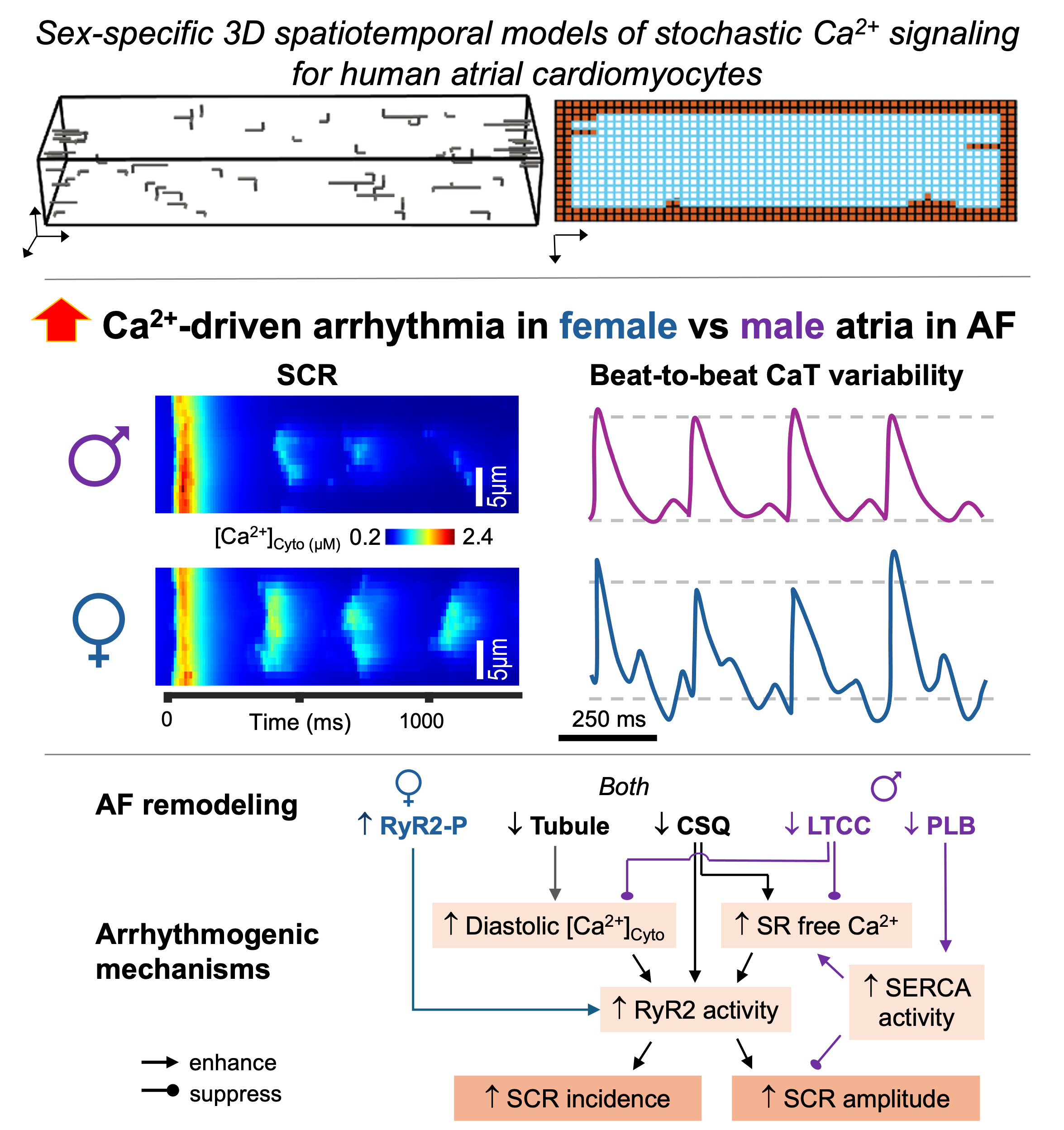New preprint online
07 March 2024
Mar. 2024. Our latest preprint, which investigates sex differences in Ca-driven arrhythmias in atrial fibrillation, is available online.
Accumulating evidence demonstrates substantial sex-related differences in atrial fibrillation (AF), which is the most common arrhythmia, with female patients faring worse with the condition. In this study, we aim to gain a mechanistic understanding of the Ca2+-handling disturbances and Ca2+-driven arrhythmogenic events in males vs. females and establish their responses to Ca2+-targeted interventions. By integrating known sex-differential components into our computational spatiotemporal atrial cardiomyocyte model, we found that female vs male atrial cardiomyocytes in AF exhibit greater propensity to developing arrhythmia-promoting spontaneous Ca2+ release events and elevated beat-to-beat variability in action potential-elicited Ca2+ transients. Computational analyses provided novel mechanistic insights into these sex differences. Furthermore, simulations of tentative Ca2+-targeted interventions identified potential treatment strategies that attenuated Ca2+-driven arrhythmogenic events in female atria (e.g., tubule restoration, and inhibition of ryanodine receptor and sarcoplasmic/endoplasmic reticulum Ca2+-ATPase), which reveal additive efficacy when applied in combination. Our study uncovers and validate sex-specific AF mechanisms and establishes that AF treatment may benefit from sex-dependent strategies informed by sex-specific mechanisms.
